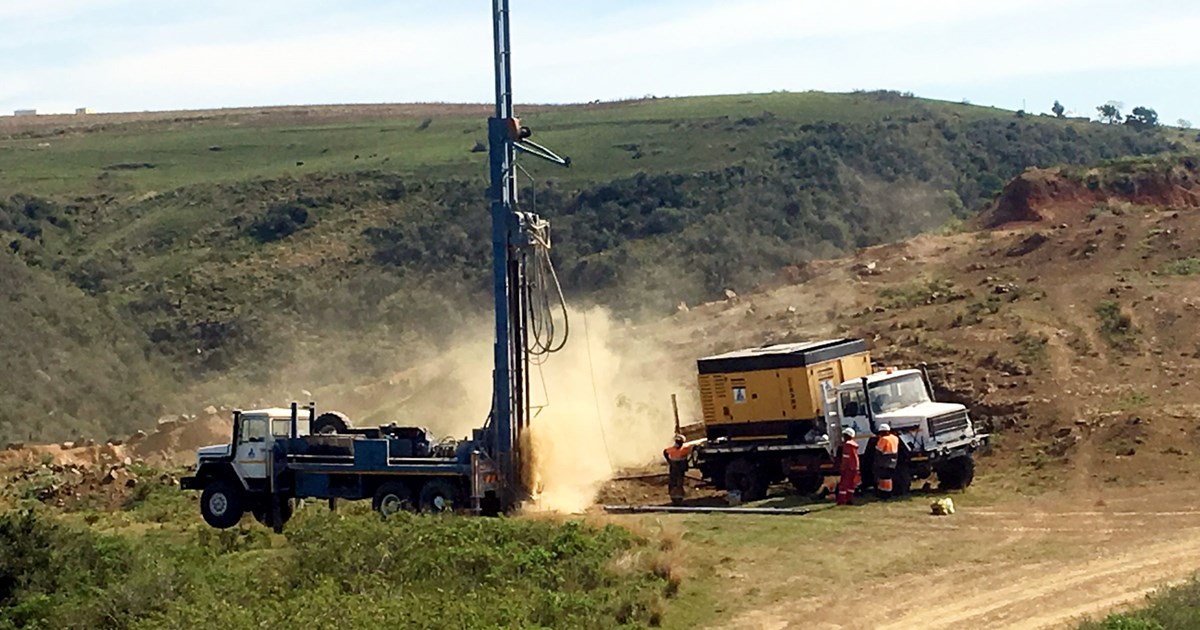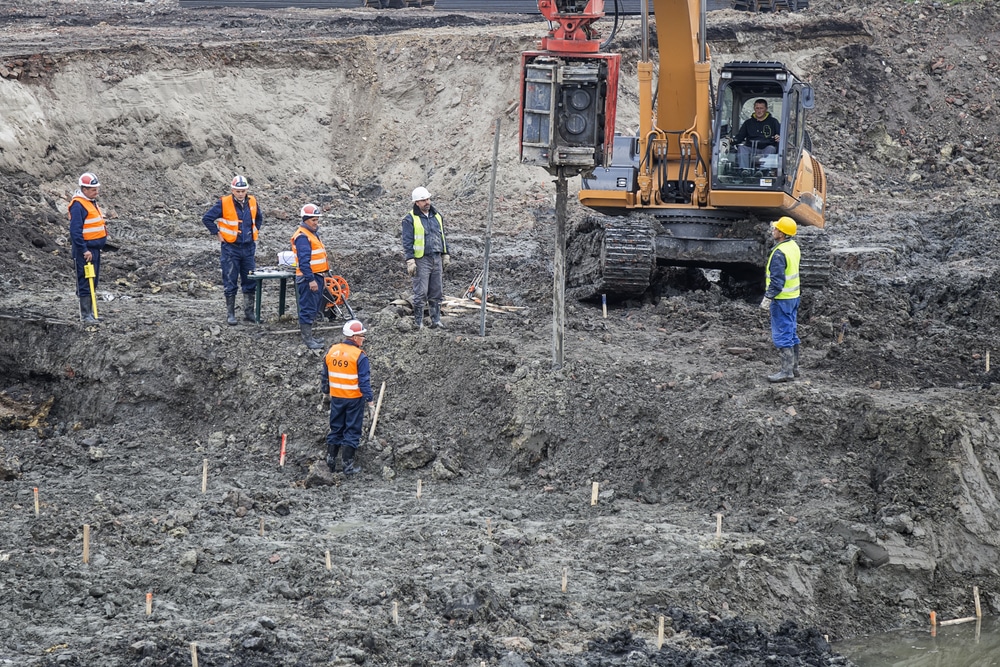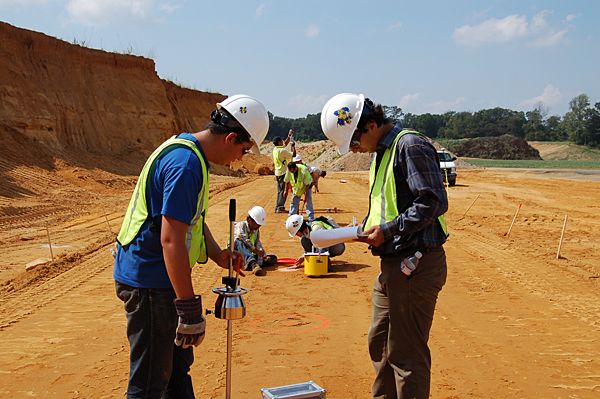An Extensive Summary of Geotechnical Design Techniques and Their Influence On Modern Civil Engineering Projects
Geotechnical design offers as the backbone of modern civil engineering, giving essential methods that deal with the intricacies of subsurface problems. The interplay of dirt evaluation, structure layout, and innovative technologies forms the integrity and sustainability of facilities jobs. As we check out these methodologies, it comes to be clear how essential they are in mitigating possible threats linked with construction. Nonetheless, the ramifications of these methods prolong past plain safety and security; they additionally influence project performance and environmental considerations, raising essential concerns about future developments in the area. What continues to be to be revealed is the transformative possibility of these innovations on city growth.
Value of Geotechnical Engineering
Geotechnical engineering offers as a critical foundation for civil engineering projects, affecting the safety and security of frameworks. This self-control focuses on the actions of soil and rock materials, giving crucial understandings that guide the design and construction processes. By comprehending the communication between the earth and crafted structures, geotechnical designers can analyze threats connected with ground conditions, such as negotiation, slope stability, and liquefaction.
The relevance of geotechnical engineering prolongs beyond mere architectural stability; it plays a crucial role in ecological defense and sustainability. Correctly carried out geotechnical analyses guarantee that tasks lessen their environmental footprint and follow regulatory demands (geotechnical specialist). Furthermore, geotechnical design contributes in website option, allowing engineers to identify ideal places for construction that alleviate possible threats.
Furthermore, geotechnical engineering fosters development in civil engineering by progressing techniques for ground renovation, structure design, and excavation. The technique's contributions are crucial in addressing difficulties presented by differing soil conditions, therefore assisting in effective and secure infrastructure advancement. Overall, the relevance of geotechnical design is critical in making sure that civil engineering projects are not just viable yet likewise resilient versus synthetic and all-natural adversities.
Secret Methods in Geotechnical Design

An additional important strategy is dirt stabilization, which includes modifying dirt properties to boost load-bearing capability or decrease negotiation. Methods such as including cement, lime, or using geosynthetics are generally made use of to achieve dirt enhancement.
Ground improvement methods, consisting of vibrant compaction and vibro-replacement, are additionally essential. These techniques intend to compress soft or loosened dirts, enhancing their strength and minimizing liquefaction possibility in seismic areas.
Preserving frameworks, such as sheet heaps and dirt nailing, are used to sustain excavations and protect against soil movement. In addition, incline stabilization techniques, including drain systems and keeping walls, are necessary for alleviating landslide risks.

Soil Evaluation and Testing Methods
Effective dirt evaluation and testing approaches are crucial for understanding the physical and chemical residential or commercial properties of soil, which straight influence design decisions. A detailed analysis of soil qualities is essential for forecasting behavior under numerous loading conditions and environmental impacts.
Common dirt testing techniques consist of both area and research laboratory methods. Field tests, such as the Requirement Infiltration Examination (SPT) and Cone Penetration Test (CPT), offer prompt understandings into soil stamina, thickness, and stratification. These tests help engineers analyze site problems successfully prior to even more considerable lab evaluations.
Lab testing approaches, More Bonuses such as Atterberg restrictions, grain dimension circulation, and compaction tests, are crucial for identifying dirt plasticity, wetness web content, and ideal compaction levels. In addition, progressed methods like triaxial tests and consolidated undrained (CU) tests supply useful data on shear strength and efficient anxiety specifications - all about geotechnical engineering.
Chemical testing, consisting of pH, electric conductivity, and natural web content evaluation, is also crucial for recognizing prospective dirt contamination and its effect on building materials. Collectively, these dirt analysis and screening techniques form the structure of notified decision-making in geotechnical design, guaranteeing the safety and security of modern-day civil engineering jobs.
Foundation Design Approaches
Structure style methods are critical in ensuring the security and long life of frameworks. These techniques can be categorized right into shallow and deep structures, each suited to specific soil problems and packing circumstances. Shallow foundations, such as spread footings and floor covering structures, are usually used when surface area soils have adequate bearing ability. They disperse the lots over a bigger area, lessening negotiation threats.
On the other hand, deep structures, including piles and pierced shafts, are utilized when surface dirts are insufficient or weak for supporting the framework. These foundations transfer loads to much deeper, much more secure dirt or rock layers, making them essential for skyscrapers and bridges in difficult geotechnical problems.
Choosing the appropriate structure design entails thorough geotechnical examinations, consisting of dirt structure, birthing ability, and groundwater problems. Engineers should consider aspects such as negotiation, lateral tons, and prospective seismic task to make sure the foundation's performance over time.
Inevitably, a well-executed foundation layout is a critical element of civil design, directly influencing the safety and security, resilience, and performance of structures. about geotechnical engineering. By straightening foundation kinds with site-specific conditions, engineers can successfully alleviate dangers connected with structure failing
Innovations Shaping Civil Engineering

Sustainable products, such as high-performance concrete and recycled accumulations, are additionally acquiring traction, promoting eco-friendly practices while preserving architectural honesty. Additionally, progressed geotechnical strategies, such as ground renovation and deep blending approaches, are improving the security of structures in tough dirt problems.
In addition, using drones and remote noticing technology is boosting website evaluating and keeping an eye on, offering real-time information that aids in managing building and construction progress and security. The application of ingenious construction techniques, such as modular and premade building, better quickens job timelines and lowers waste. Jointly, these technologies are not just changing civil engineering practices but also guaranteeing that modern-day framework meets the demands of an expanding worldwide populace while attending to environmental problems.
Conclusion
In verdict, geotechnical design techniques are indispensable to the success of modern-day civil design projects. By using these methods, engineers can alleviate dangers and contribute to the development of resilient city atmospheres, eventually promoting sustainable development and security in civil design practices.
Geotechnical design serves as the foundation of modern civil engineering, offering essential techniques that deal with the complexities of subsurface conditions.Geotechnical design offers as a critical foundation for civil design tasks, influencing the best site security and security of structures.In enhancement, geotechnical design cultivates technology in civil engineering by progressing techniques for ground renovation, structure style, and excavation. In general, the relevance of geotechnical design is vital in guaranteeing that civil design jobs are not just feasible however additionally durable against natural and man-made adversities.
In final thought, geotechnical design methods are indispensable to the success of modern civil engineering tasks.